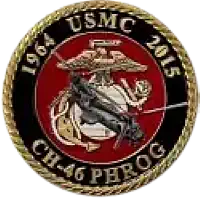
Challenge Coins
A Symbol of History, Camaraderie, and Recognition
Challenge coins represent a rich tradition of military and organizational recognition. Furthermore, these distinctive tokens carry significant meaning across various groups. They symbolize camaraderie, teamwork, and achievement. Moreover, commemorative coins have evolved from simple identification markers to treasured symbols of membership and honor.
The Rich History of Military Challenge Tokens
Various stories and origins connect to these special tokens. Additionally, the history creates a tapestry of fascinating accounts. Each story reflects the coin’s purpose and value. Therefore, these tokens represent much more than simple medallions.
Origins and Early Development
Military units first popularized commemorative coins during World War I. Furthermore, pilots carried these tokens as identification markers. The tradition spread quickly throughout different branches. Consequently, unit coins became symbols of pride and membership.
Early tokens featured unit insignia and mottos. Additionally, commanders used them to boost morale and esprit de corps. The medallions created bonds between service members. Therefore, they strengthened unit cohesion and identity.
Modern Uses and Custom Coin Applications
Today’s commemorative coins serve multiple purposes beyond military use. Furthermore, corporations create custom tokens for employee recognition programs. Law enforcement agencies use them to honor outstanding service. Similarly, firefighters and first responders embrace this tradition.
Find more military coin medals and tokens in the world of Exonumia. Collectors actively seek rare and unique medallions. Moreover, veterans treasure tokens from their service units. Additionally, they preserve important historical moments and achievements.
Design Elements and Token Symbolism
Commemorative coins feature intricate designs and meaningful symbols. Furthermore, each element represents specific values or achievements. Colors hold particular significance in military and organizational contexts. Therefore, designers carefully select every visual component.
Common elements include unit crests, organizational logos, and patriotic imagery. Additionally, tokens often display mottos or inspiring phrases. The reverse side typically contains additional information. Consequently, both sides contribute to the medallion’s overall meaning.
The Coin Check Challenge Tradition
The famous “coin check” tradition adds excitement to military tokens. Furthermore, members present each other to produce their medallions. Those who cannot show their token must buy drinks. Moreover, this tradition strengthens bonds between group members.
Rules vary between different organizations and units. Additionally, some groups have specific protocols for token challenges. The tradition creates memorable moments and lasting friendships. Therefore, commemorative coins continue building camaraderie across generations.
Collecting and Preserving Military Medallions
Many people collect commemorative coins as historical artifacts. Furthermore, collectors focus on specific military units or time periods. Rare tokens command high prices at auctions and shows. Additionally, proper storage helps preserve their condition and value.
Museums display these tokens to educate visitors about military history. Moreover, families pass down medallions through generations. Consequently, commemorative coins remain important historical documents for future generations.
One of the earliest stories that link coins to recognition and honor takes us back to ancient Rome, where it is believed that Roman soldiers were presented with coins to acknowledge their courage and bravery in battle. These coins were not the elaborately designed Challenge Coins we know today, but they marked the beginning of a tradition that has continued for centuries. The Roman soldiers who received these coins felt a deep sense of pride and camaraderie, knowing that they were part of an elite group of warriors.
Another account of early recognition coins comes from medieval times, during the era of Portrait Medals. These medals were given to individuals of high social status as a form of recognition or honor. They often depicted the individual’s portrait and were used as a means of commemorating their achievements or contributions to society. Portrait Medals served as a tangible reminder of one’s accomplishments and a testament to their reputation.
However, the most commonly known story about Challenge Coins is attributed to World War I, a time when these coins took on a more recognizable form. The tale revolves around a young pilot who was shot down behind enemy lines. This pilot was wearing a medallion that was given to members of his unit. The medallion helped identify him as part of a specific squadron, and his captors recognized the emblem on the medallion, confirming his identification. As a result, they spared his life and offered him a bottle of wine as a gesture of goodwill. This incident marked the birth of the modern Challenge Coin as we know it today.






 '
'